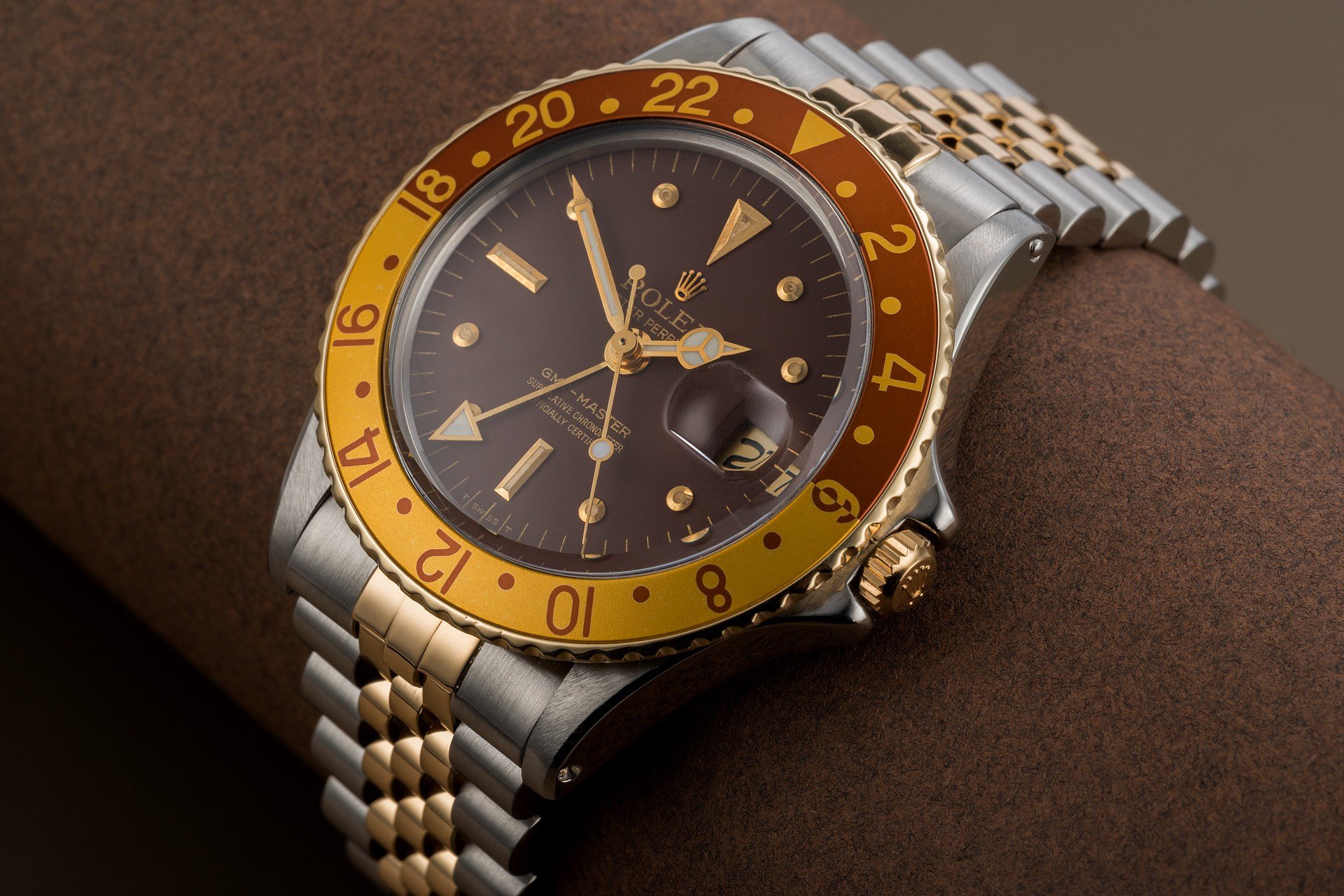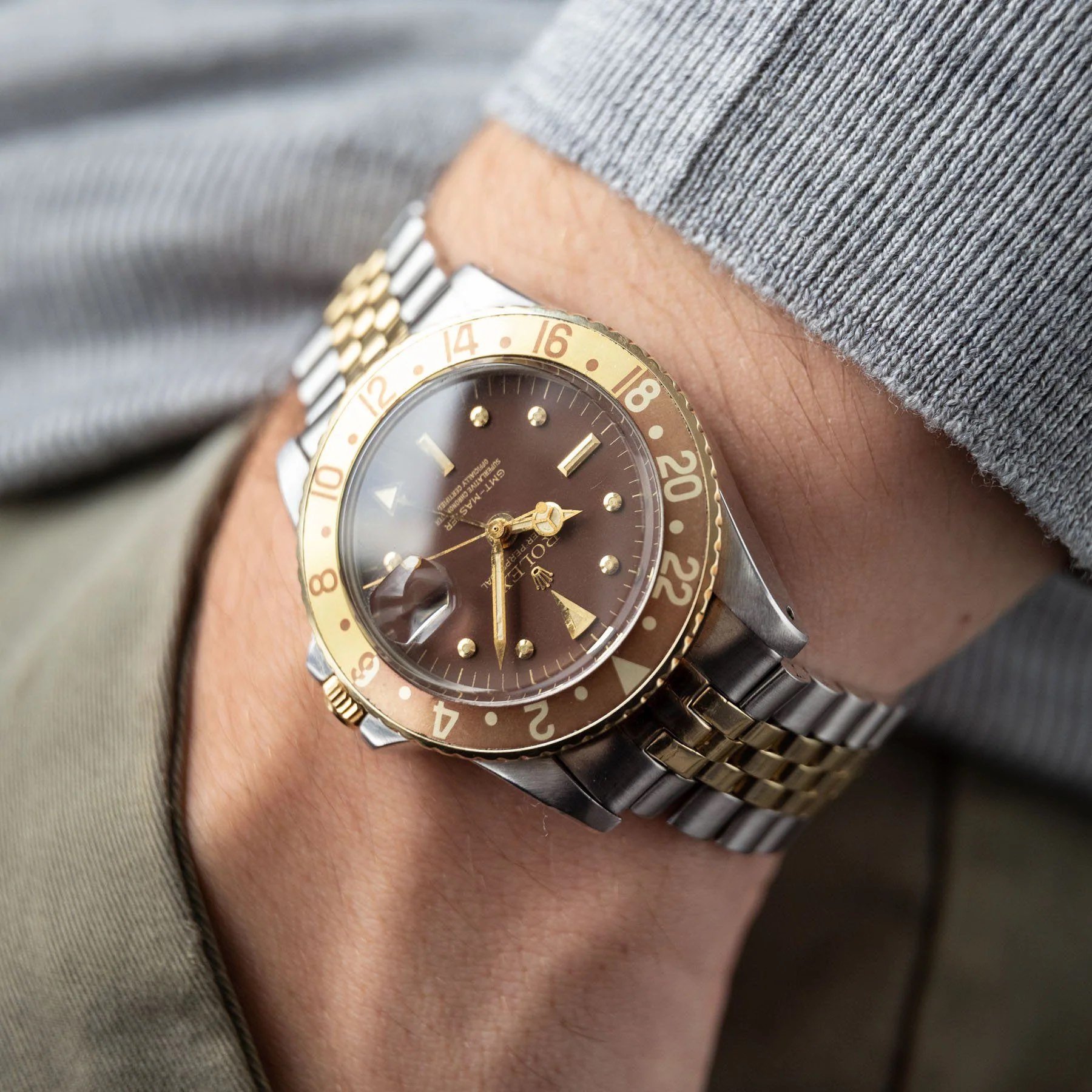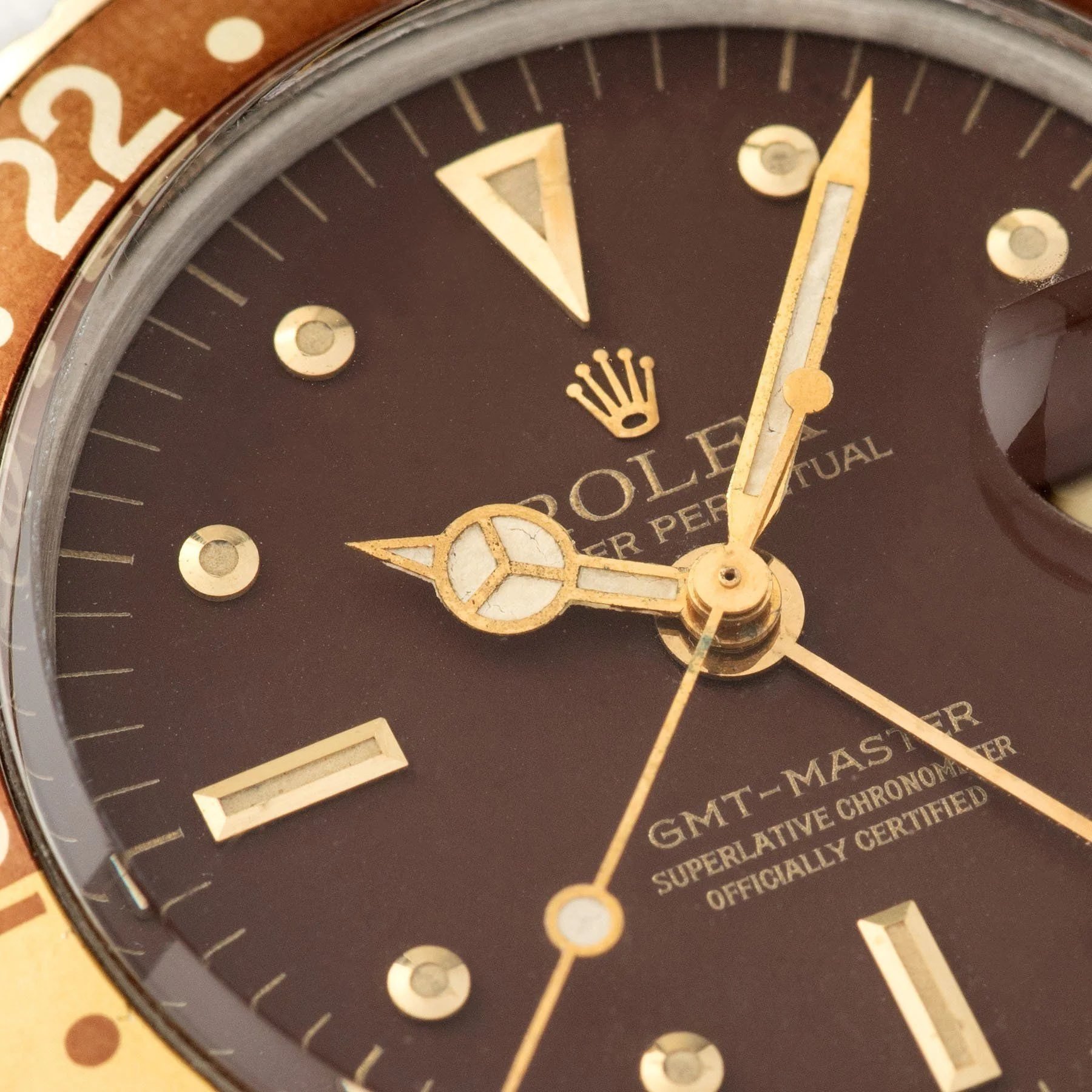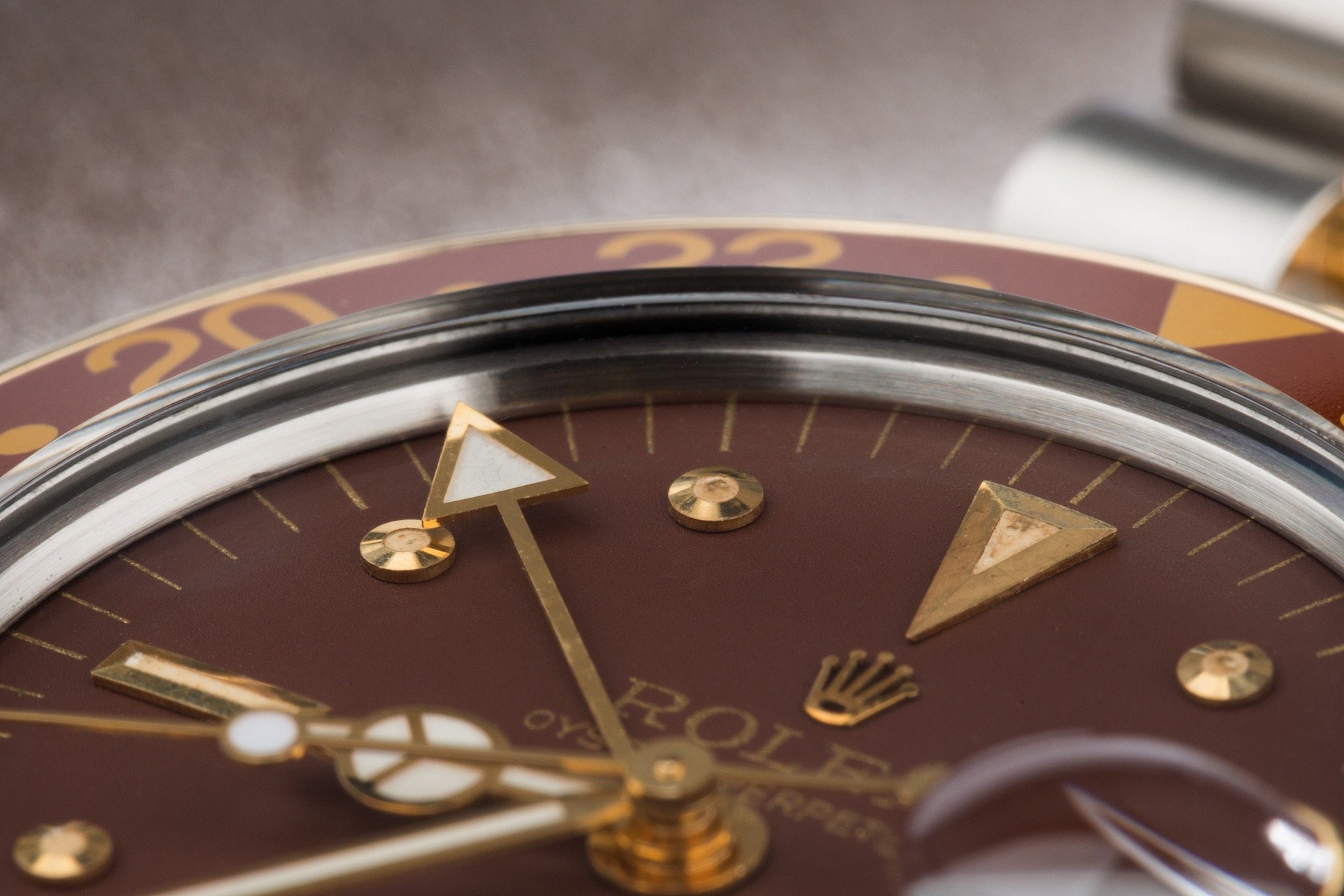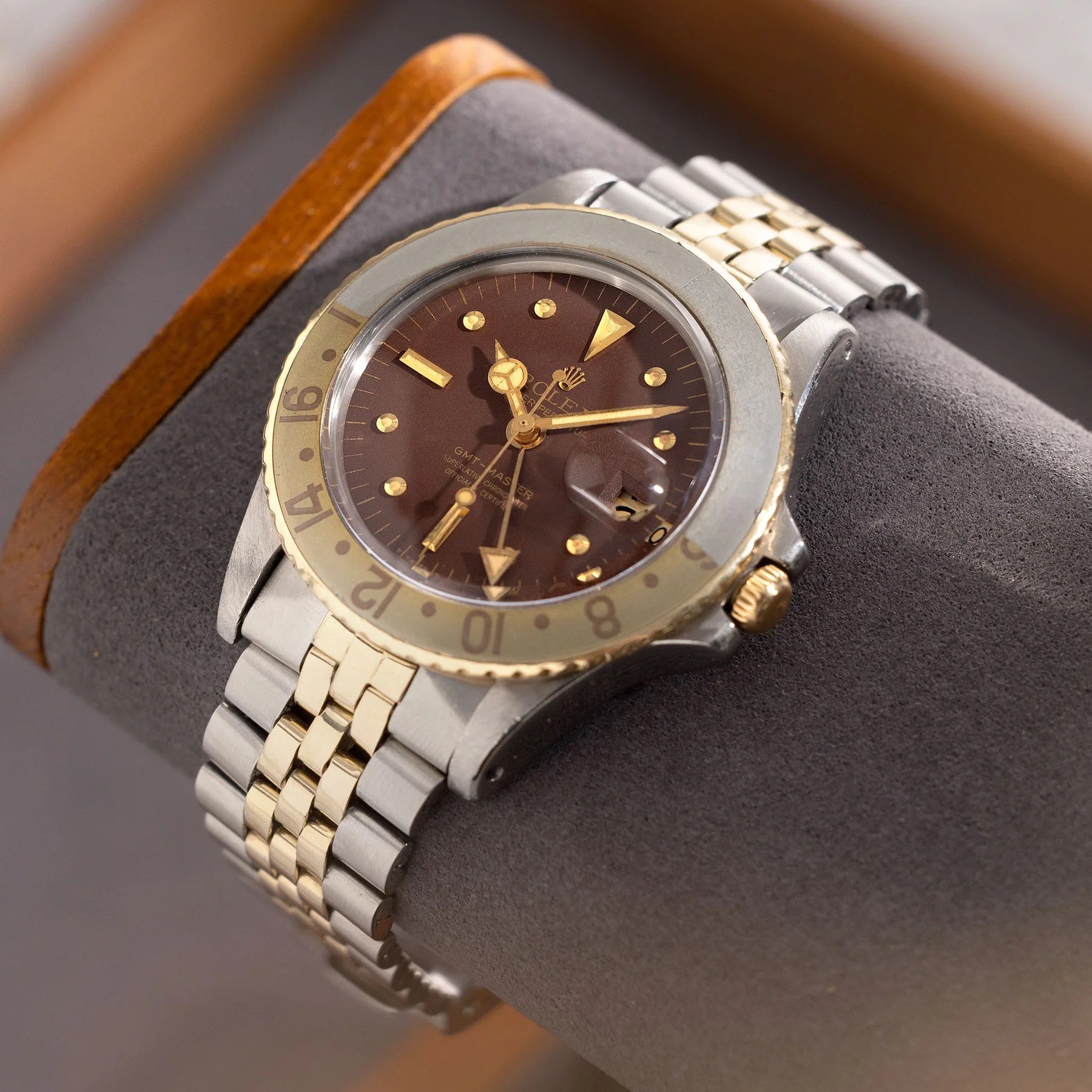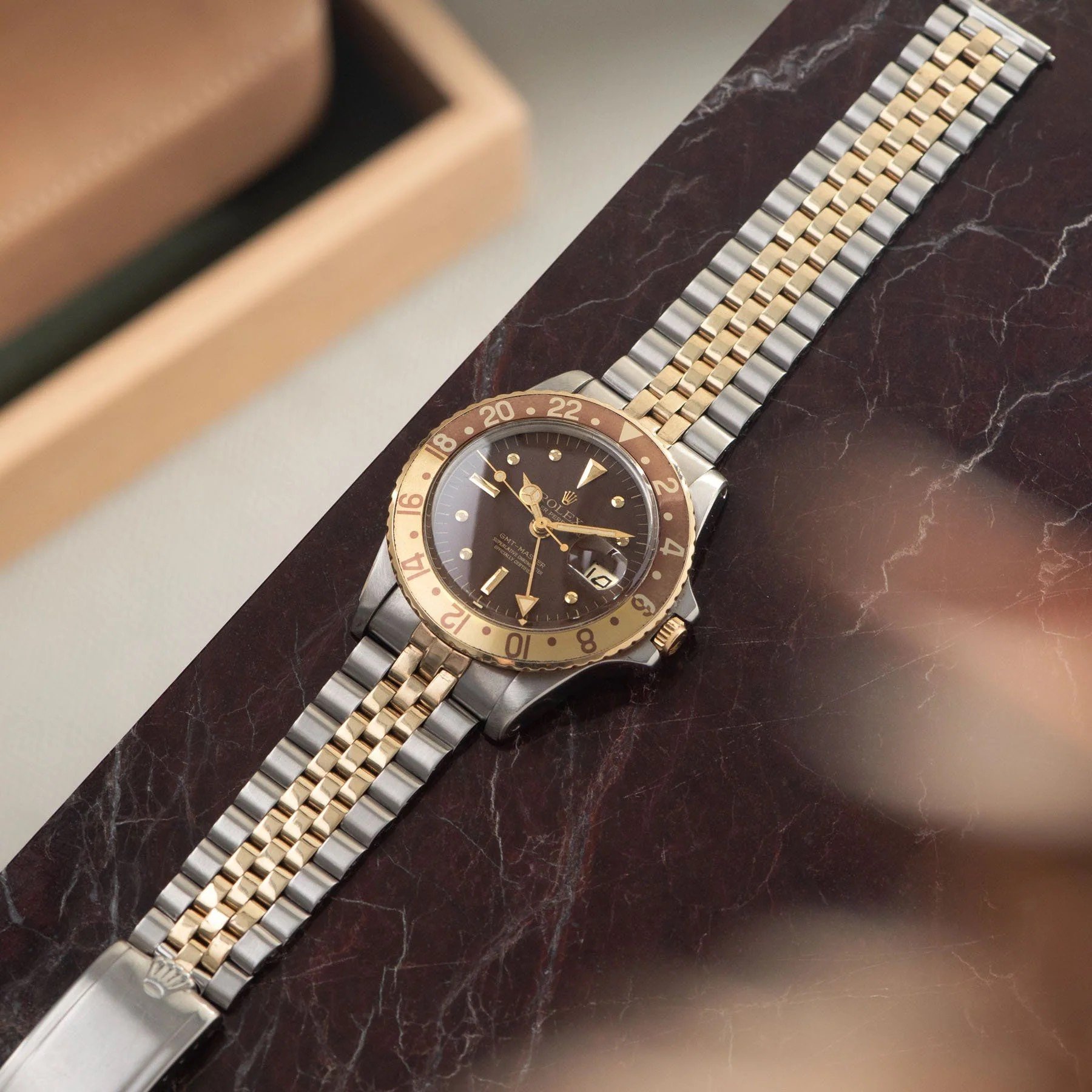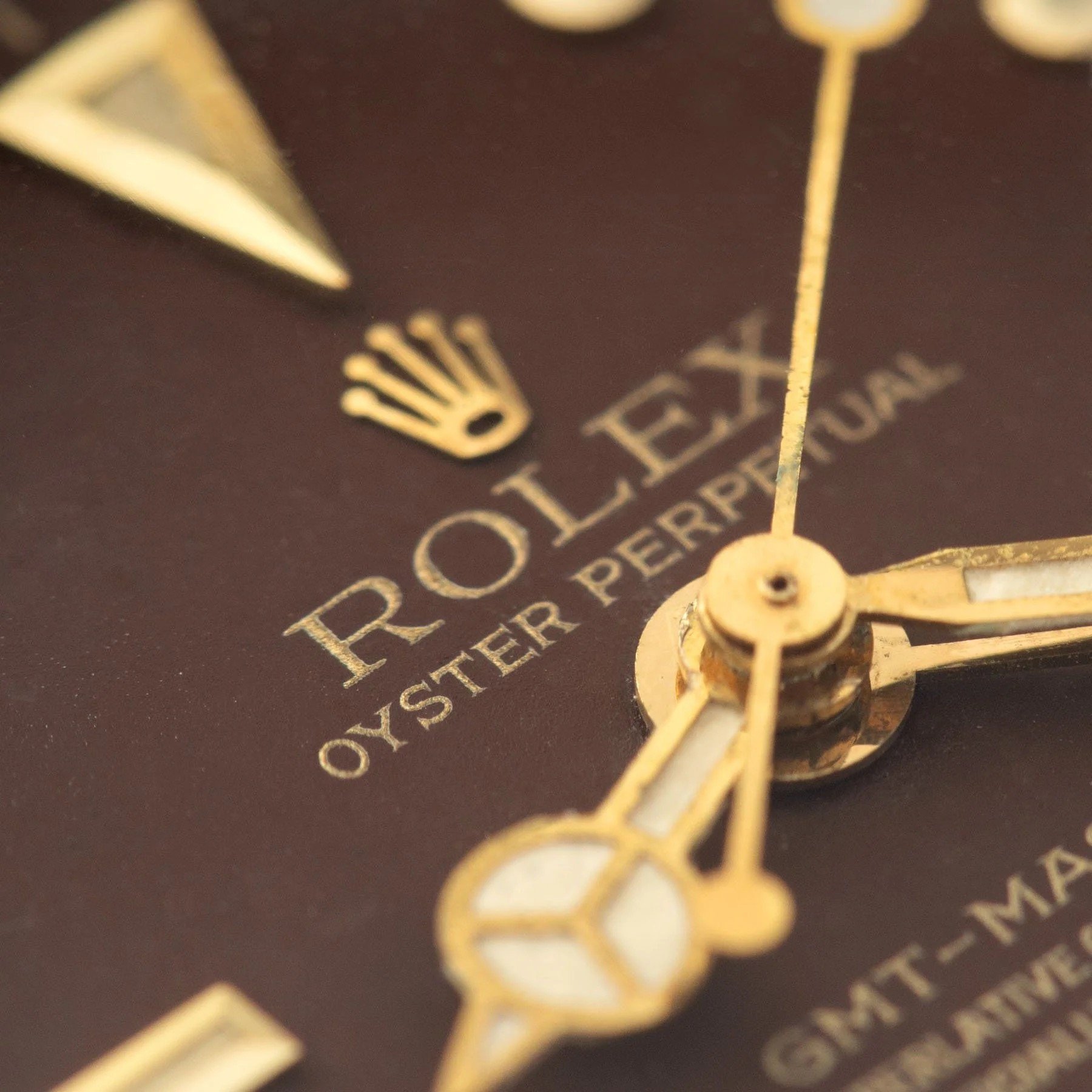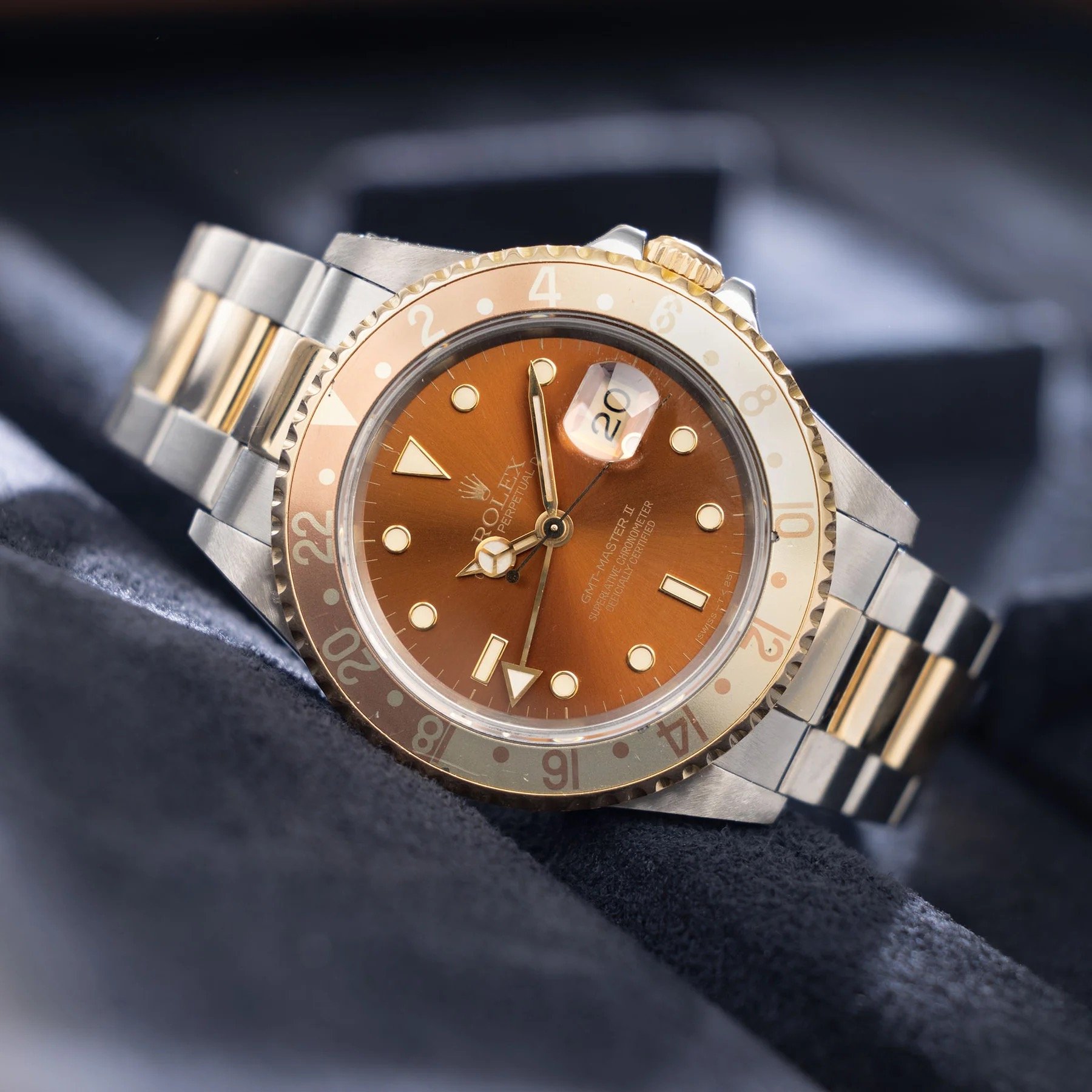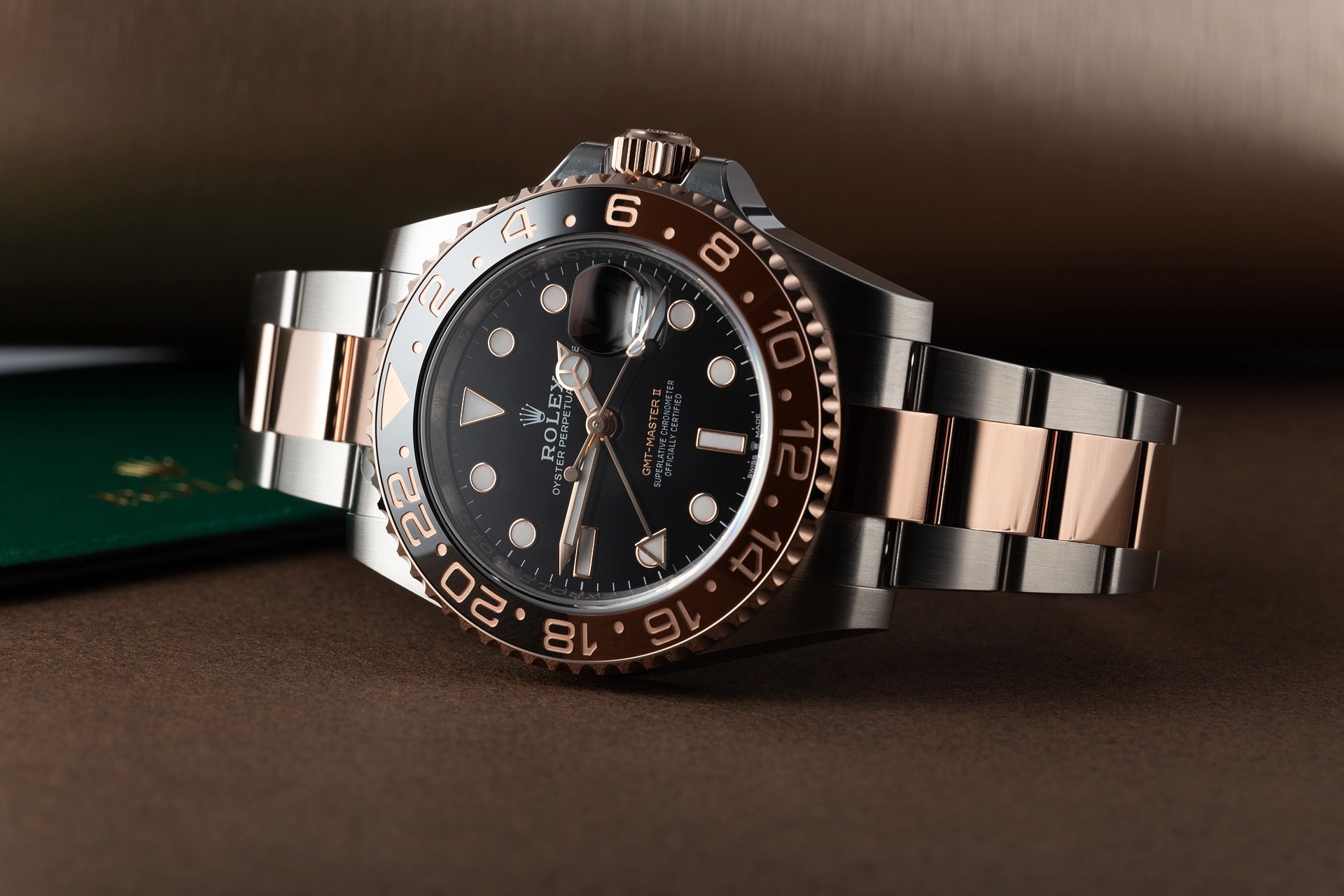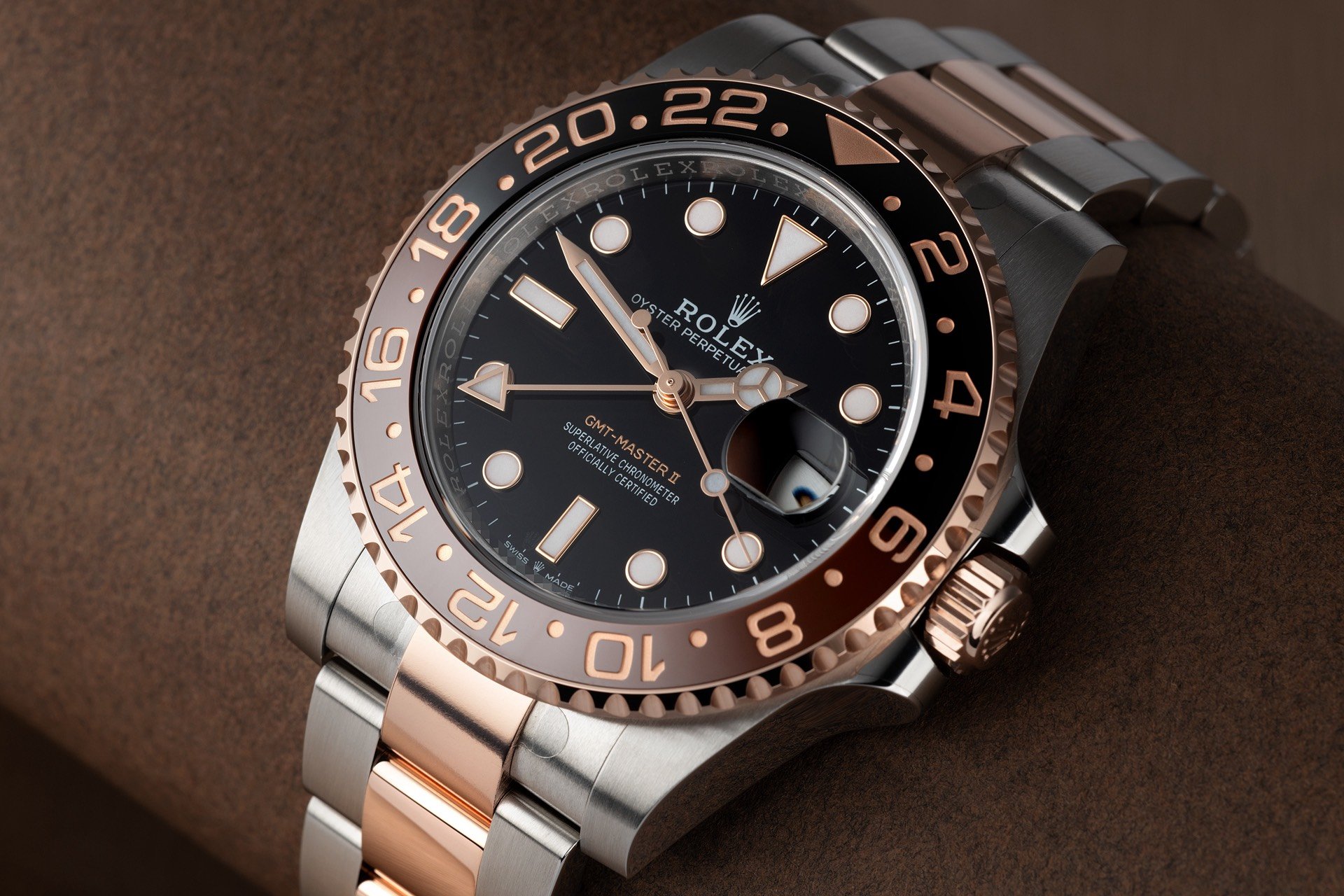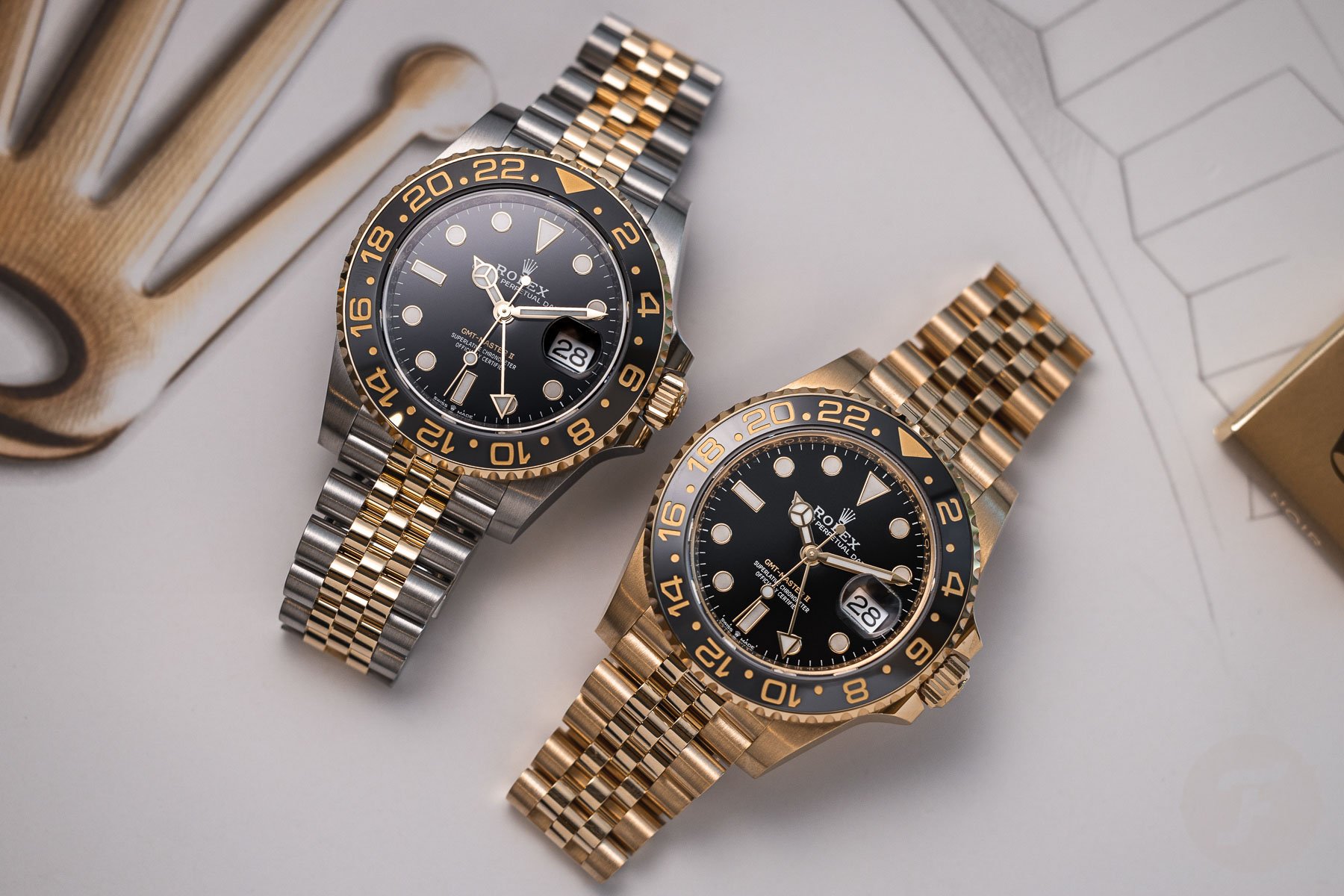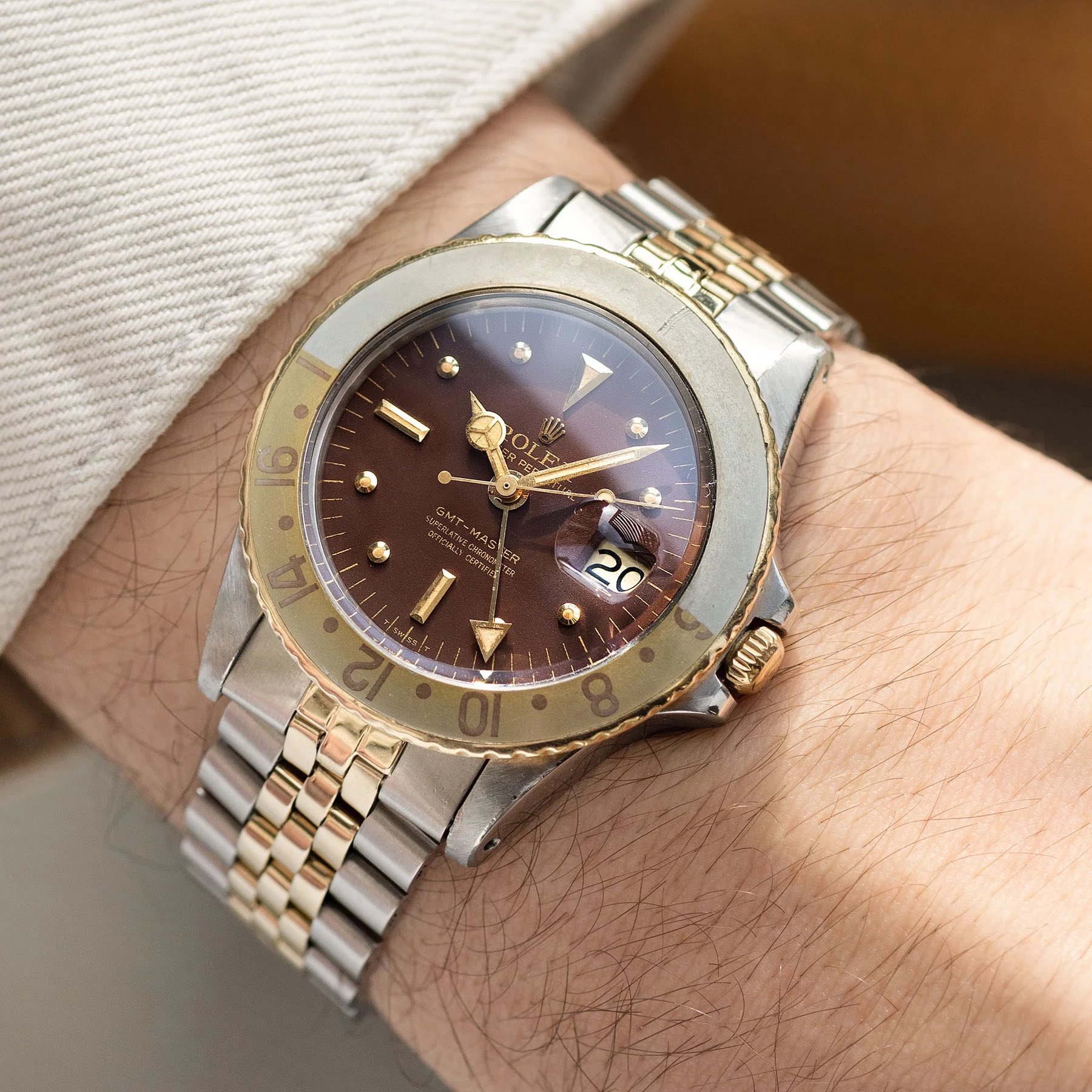Dear Rolex, Bring Back The GMT-Master Ref. 1675/3 “Root Beer”
By reading the title, you might think that I have completely lost it. But before you descend to the comments section, hear me out. With 2024 just starting, the rumors of potential new Rolex models have started. A lot of them center around a new Milgauss. While I love the Milgauss, I would love a new color variant of an existing model. It’s wishful thinking based on two simple facts. Some people call the GMT-Master II ref. 126711CHNR in Everose gold and steel the modern “Root Beer.” Is it really, though? The new two-tone yellow gold and steel 126713GRNR with its gray and black bezel also possesses a vintage charm that we have missed with the modern GMT-Master II. This is why I have a simple wish — a true, modern GMT-Master II “Root Beer.”
To be honest, I don’t think a return to the true form for the Root Beer will happen. The Everose gold and steel version of the modern Rolex GMT-Master II is too close to home. And don’t get me wrong; I don’t wish to see that go. There are plenty of fans of the ref. 126711CHNR, and I understand why. But as Brandon brilliantly explained two years ago, that watch feels more like the GMT-Master II “Cough Syrup” than a true Root Beer. That’s why a proper Root Beer based on the reference 1675/3 would be a great addition to the GMT-Master II lineup.
Praise for the vintage one
If you have read this series of articles, you know that it’s not necessarily about our wishes coming true. Rather, it’s more about praising a classic from the past, and that’s exactly what inspired me to put this wishful thinking on paper. Brandon’s article compared the current “Cough Syrup” to the 1990s GMT-Master II ref. 16713, a watch that he loves and which can be considered the neo-vintage Root Beer. While I also like that watch, the true Root Beers in my book are the original GMT-Master 1675/3 and the later 16753. Those statements of 1970s style started the Root Beer legacy.
So, let’s look at the classic Root Beer today. By the way, I love how the watch has multiple other nicknames, from “Clint Eastwood” to “Tiger Auge” (German) or “Tiger Eye” in English. Is that a testament to the watch’s style? It’s a definite “yes” if you ask me, although I do understand if you’re not a fan of the classic Root Beer aesthetic. It’s not something that everyone loves. As Mike perfectly explained in his review of his 16753, it’s a classic love-or-hate situation. But it’s something you can grow into, just as Mike and I had to get used to this flashy statement of ’70s opulence.
The love for the GMT-Master ref. 1675
So, how did my love for the watch start? As some of you might know, my favorite GMT-Master is the ref. 1675 in stainless with the famous “Pepsi” bezel. It’s one of the special Rolex references that remained in production for multiple decades. The stainless steel ref. 1675 was introduced in 1959 and was not discontinued until 1980. For me, the ultimate GMT-Master perfectly represents what makes Rolex designs so great. Over the years, Rolex used different bezel and dial variations for the 1675 that are worth a thorough study in and of themselves. But we’re not here to talk about the stainless steel version.
In 1970, Rolex introduced the ref. 1675/3 in stainless steel and 14K gold, the first two-tone GMT-Master. The watch was added to the lineup alongside the ref. 1675 in either stainless steel or full gold. In terms of color use and overall presence, the two-tone version is closer to the full-gold version than the stainless steel one. Whereas the Pepsi-bezel variant has a crispness to it that is timeless, both the full-gold and two-tone 1675 models are deeply rooted in the style of the ’70s. The 1675/3 stayed in production until 1980 when the reference 1675 in stainless steel was replaced by the 16570.
What defines a “Root Beer”?
That’s also when the 16573 entered as the replacement of the 1675/3. While they are largely the same in terms of looks, there are differences between the two. While it may be unnecessary, let’s start with the details that define a “Root Beer.” As I mentioned, the watch was the first two-tone GMT-Master, combining stainless steel and 14K gold. It featured a stainless steel case graced by a yellow gold bezel and crown. The gold bezel featured a brown and gold insert that inspired the “Root Beer” nickname. It was paired with a dark brown dial featuring distinctive gold indices with just a small amount of lume on top, earning it the “nipple dial” nickname.
Lastly, there was the choice of a two-tone Jubilee or Oyster bracelet. While Rolex officially offered both, only the Jubilee bracelet makes a legit “Root Beer” in my book. It adds the stylistic refinement that the watch deserves or even needs. Regarding visual differences between the 1675/3 and the 16753, the main one is the applied gold coronet on the 1675/3, whereas the 16753 has a printed coronet. Another difference is the movement. The older version used the Rolex caliber 1575, whereas the second generation switched to the 3075, which increased the operation frequency from 19,800vph to 28,800vph and added a quickset date.
A statement defined by its time
One of the things I love about Rolex designs is how they are not defined by the time they were released. The Root Beer is the glorious exception to that rule. It is unapologetic in its ’70s presence. While the 16753 was a watch of the ’80s, it doesn’t change the statement. But as I said before, it’s not a statement that everyone loves immediately. In the article about his 16573, Mike perfectly explained his initial reaction to the Root Beer: “U-g-l-y was my thinking in a nutshell. Overwrought, gaudy, and a bit cheesy were the descriptors formerly in my mind.” And my initial thoughts when I was first confronted with the watch were similar.
There are two design hurdles that you have to overcome. First, you have to love a two-tone watch. I love a great gold and steel watch, but not every watch looks good in that frivolous combination of materials. The Datejust and the GMT-Master are the Rolex models that look good in gold and steel.
Additionally, you have to love the classic ’70s vibe. The combination of brown and gold is glorious in my book, but I can see why some people are not fans of it. But that’s also why it appeals to me. Its divisive nature makes it easier to love if you like the cool style of the Root Beer.
What came after the original Root Beer?
In the late 1980s, the 16753 was discontinued, and the follow-up was the GMT-Master II ref. 16713. It’s the watch that Brandon wrote about two years ago in his article. The 16713 came with the then-new caliber 3185, allowing for independent setting of the 12-hour hand. Additionally, it had a sapphire crystal, and the updated brown dial featured luminous markers with yellow gold surrounds. It was more in line with the other Rolex designs of the time, but I feel that it lost its character. The nipple dial is one of the great features of the vintage Root Beer. I also like the dark brown color of the original dial a lot better than the lighter, almost bronze hue of 16713’s sunburst dial.
The 16713 stayed in production until 2006. After it was discontinued, it seemed as if the Root Beer was gone forever. But in 2018, Rolex unveiled a new modern GMT-Master that hinted at the icon from the past. But it is the current ref. 126711CHNR really a Root Beer? Brandon asked that same question in his article. While he commented that the brown and black bezel was the first sign of not being a true Root Beer, he could forgive Rolex for using Everose gold. That’s something that I’m afraid I have to disagree with. Call me a purist, but for a Root Beer, the combination of steel and yellow gold is essential.
What could be the future GMT-Master II Root Beer?
Brandon couldn’t forgive Rolex for using a black dial rather than a brown one. I agree that it further steers the watch away from the Root Beer moniker. One thing that he didn’t mention is that there is no Jubilee option for the 126711CHNR. Adding all those things up, it’s safe to say that it is not a reincarnated Root Beer. A fun thing to mention is that Rolex doesn’t come up with nicknames. Thus, it was the fans who dubbed the 126711CHNR the modern “Root Beer.” In all fairness, though, plenty of people do not call it that and have come up with alternative nicknames.
Does it make it make it a bad or an ugly watch? No. I like the 126711CHNR quite a bit. But as soon as you label it a “Root Beer,” it conjures a historical perspective and a set of expectations that this chunk of steel and Everose gold cannot meet. But there is light at the end of the tunnel. In 2023, Rolex introduced the brilliant two-tone GMT-Master II ref. 126713GRNR along with the 126718GRNR in full yellow gold. As Robert-Jan explained, both models have that vintage vibe that’s missing from the modern ceramic-bezel GMT-Master IIs. This is exactly why I believe that Rolex could and should make a proper follow-up to the 16713.
First of all, the ref. 126713GRNR is a two-tone watch in yellow gold and stainless steel, which is the right combination of materials. Second, the watch comes on a Jubilee bracelet, another distinct feature needed for the modern Root Beer. Finally, the watches have a vintage feel that’s perfect for a new Root Beer. They only need a dark brown dial and a brown and gold bezel insert.
Of course, I am only half serious when I ask Rolex to make a new version of the iconic Root Beer. I would love to see it, but I do not think it will ever happen. On top of that, for me, it’s impossible to beat the charm of the original Rolex GMT-Master 1675/3. It is one of my top five favorite Rolex watches ever created and will always be the true Root Beer. Nothing will change that.
What are your thoughts on the vintage Root Beer? Would you like to see a modern version of this classic, or does the 126711CHNR do the trick for you? Let us know your thoughts in the comments section below.

